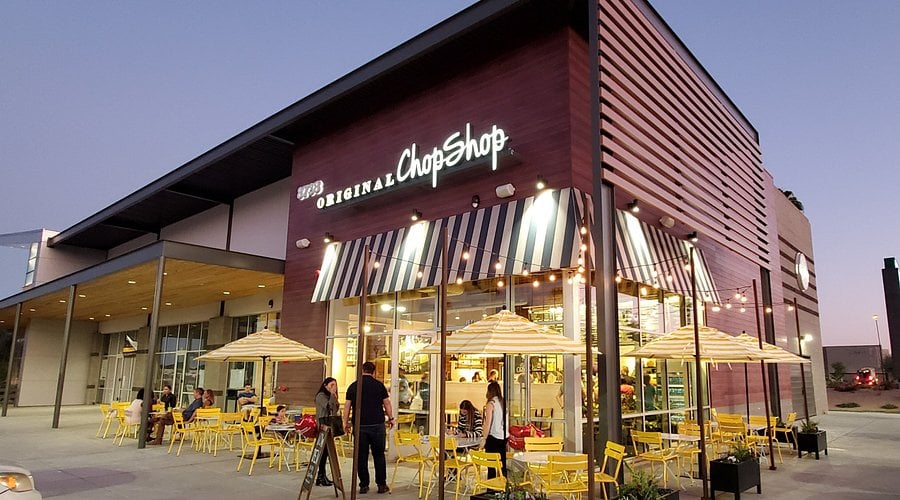Kitchen Capacity Management is Solving Omnichannel Ordering Challenges for QSR Restaurants
Quick Service Restaurants (QSRs) face mounting pressure to keep up with the surge in omnichannel orders. From online delivery to takeout and walk-in customers, kitchens are juggling a complex mix of demand, often leading to operational bottlenecks, staff stress, and unhappy customers. For QSR operators, mastering Kitchen Capacity Management is no longer optional—it’s essential for survival and growth.
In this blog, we’ll explore how effective Kitchen Capacity Management addresses these challenges and helps QSR restaurants operate smoothly while maintaining food quality, staff well-being, and customer satisfaction.
What Is Kitchen Capacity Management?
Kitchen Capacity Management is the process of optimizing a restaurant’s ability to handle omnichannel orders—particularly delivery and takeout—by balancing kitchen workload, staff efficiency, and customer communications.
For restaurants leveraging digital orders, the influx of tickets can quickly overwhelm even the most well-trained teams during peak hours. Orders get backed up, food quality suffers, and customers are left waiting—whether they’re in the store, at home, or in their cars. This domino effect can be costly, resulting in negative reviews, staff burnout, and lost revenue opportunities.
At its core, Kitchen Capacity Management helps prevent these issues by:
- Monitoring kitchen operations in real time.
- Adjusting order flows dynamically to match capacity.
- Communicating accurate updates to customers and delivery drivers.
With the right tools, QSRs can avoid chaotic rushes, ensure timely order fulfillment, and streamline operations for a smoother experience across the board.

The Challenges Facing QSR Kitchens
To understand the value of Kitchen Capacity Management, let’s look at some of the most common problems QSRs face today:
- Overloaded Kitchens During Peak Hours
When multiple online orders pour in alongside in-store requests, kitchen staff struggle to keep up. Orders get delayed, food quality suffers, and stress levels rise. - Lack of Real-Time Visibility
Without real-time insights into order volume and kitchen workload, managers can’t make informed decisions to pace operations effectively. - Missed Delivery Timelines
Delays in preparing food mean delivery drivers and customers are left waiting, which often results in negative reviews and reduced customer loyalty. - Staff Burnout and Inefficiency
Overwhelmed staff are prone to errors, burnout, and frustration—leading to high turnover and costly training cycles. - Inaccurate Guest Communication
When customers and delivery drivers receive inaccurate pickup or delivery times, frustration builds, leading to poor reviews and damage to the restaurant’s reputation.
The result? A broken system that creates chaos for kitchens, staff, and customers.

How Curbit Solves Kitchen Capacity Management Challenges
Curbit’s AI-powered Kitchen Capacity Management tools address these challenges head-on, creating harmony between incoming orders, kitchen capacity, and customer expectations.
By using cutting-edge technology, Curbit ensures QSR kitchens operate efficiently—even during peak hours—while delivering a seamless experience for customers and staff alike.
Here’s how it works:
1. Dynamic Order Orchestration
Curbit dynamically adjusts order schedules in real time based on current kitchen workload and capacity. For example, when your orders start piling up from all channels, the system automatically spaces out preparation times to ensure staff can fulfill orders accurately and on time.
Result: Reduced stress for kitchen staff and consistent food quality during busy periods.
2. Order Throttling
Curbit’s order throttling feature helps limit or pace the flow of incoming orders during peak times. By temporarily capping order volume, restaurants can avoid bottlenecks that slow down service and overwhelm employees.
Result: Staff can focus on quality and speed without sacrificing customer satisfaction.
3. Data-Driven Insights
Curbit provides actionable, data-driven insights that help restaurants predict demand patterns and optimize operations. By analyzing order volume, peak times, and kitchen performance, managers can make smarter staffing and scheduling decisions.
Result: Restaurants can anticipate busy periods, plan accordingly, and avoid last-minute chaos.
4. Real-Time Guest Updates
Keeping customers and delivery drivers informed is critical. Curbit uses real-time kitchen data from our partners like QSR Automations to send accurate updates via SMS text, letting customers know exactly when to arrive for pickup or delivery.
Result: Improved customer experience, reduced driver wait times, and fewer frustrated guests.
The Benefits of Kitchen Capacity Management for QSRs
By implementing Curbit’s Kitchen Capacity Management solutions, QSRs can achieve significant operational and business benefits, including:
- Improved Customer Satisfaction: Accurate, timely orders lead to happier customers and positive reviews.
- Reduced Staff Stress: Managing order flow reduces pressure on staff, improving morale and productivity.
- Higher Operational Efficiency: Kitchens can handle more orders without sacrificing speed or quality.
- Enhanced Brand Reputation: Consistently delivering on-time orders strengthens trust and loyalty with customers.
- Optimized Revenue Potential: Managing capacity ensures kitchens don’t turn away orders while still maintaining efficiency.
 Why QSRs Need to Prioritize Kitchen Capacity Management
Why QSRs Need to Prioritize Kitchen Capacity Management
For QSRs operating in a highly competitive market, every second counts. Customers expect their food to arrive hot, fresh, and on time, and a single bad experience can send them to a competitor. Kitchen Capacity Management allows QSRs to consistently meet these expectations by balancing workload, improving workflows, and delivering exceptional customer experiences.
Curbit’s AI-driven tools take the guesswork out of managing order flow, giving QSR operators the confidence to handle peak demand without compromising quality.
Ready to Master Kitchen Capacity Management?
At Curbit, we believe that every QSR has the potential to run a smoother, smarter kitchen. By leveraging real-time insights, dynamic order orchestration, and proactive guest updates, we help restaurants reduce stress, improve efficiency, and delight customers—all while protecting their bottom line.
Ready to transform your QSR’s kitchen operations? Contact Curbit today and learn how our innovative Kitchen Capacity Management solutions can help your restaurant thrive in the digital age.
About Curbit:
Curbit is the industry's first provider of Kitchen Capacity Management solutions for restaurants offering digital delivery and takeout services. With integration partners like Olo, Toast, QSR Automations, NCR, and many others, we help restaurants streamline operations, reduce kitchen stress, and deliver exceptional customer experiences with cutting-edge AI-powered tools.
Contact us to learn more.


